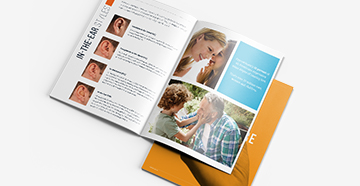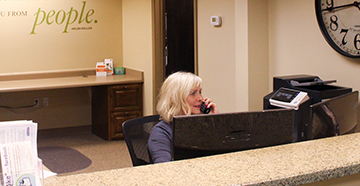Welcome To Rocky Mountain Hearing & Balance
Our Promise. Our Guarantee. Helping keep you active, healthy, and enjoying life!
Experience The Rocky Mountain Hearing & Balance Difference
There is a reason that more than 90% of our business is from repeat customers or are referred by current patients or a trusted physician. Our providers are university-trained doctors of audiology and understand that attention to the small details makes a large impact in our patient’s experience.
The Hearing Difference
Rocky Mountain Hearing and Balance wants you to experience what makes our practice different, through personalized hearing aid care and services.
The Rocky Mountain Hearing Difference means:
- Consultations Focus on Your Needs, in a Comfortable Environment
- See the Same Provider Throughout Your Entire Experience Including:
- Personalized Device Selection
- Individualized Fitting
- Education on Handling & Maintenance of Hearing Devices
- Proactively Scheduled Follow-ups & Continuing Support
- 55-day Trial Period and Satisfaction Guarantee
- University-Trained hearing aid experts that provide unmatched customized care


The Balance Difference
Our practice takes a team approach to address your dizziness and balance issues, which is why we work closely with your primary care physician and other top specialists in the industry.
The Rocky Mountain Balance Difference means:
- Thorough Testing completed by University-Trained Audiologists
- Detailed Discussion of Symptoms & Previous Testing
- Specialized Diagnostic Tests Including:
- Videonystagmography, Vestibular Evoked Myogenic Potentials, Electrocochleography
- Checks for Benign Paroxysmal Positional Vertigo (BPPV)
- Test Results Analyzed in Real Time, Delivered Same-Day
- Treatment for Benign Paroxysmal Positional Vertigo (BPPV)
- Networked with otology/neurotology, neurology, & physical therapists to serve your specific needs
- Comprehensive and Prompt Reporting to Your Physician
Time For An Upgrade? Try Out The Latest, Risk-Free For A 55-Day Trial!
Experience the most natural hearing experience technology can offer. New features includes total bluetooth connectivity, adjustable environment settings, and rechargeable models. Give us a call or send a message to find out how to participate in a free trial.
![]()
Come Experience The Difference
What if listening was easy again? What if you could participate in conversations, even in noisy situations? What if your hearing healthcare provider was willing to spend the time necessary to listen and provide personalized, comprehensive care? Often times when people are unsatisfied with their hearing devices, it is likely they did not receive the important services that are the standard of care at Rocky Mountain Hearing and Balance.
Call 801-268-3277 to schedule an appointment at our office.



We’re In Network With:
- Medicare/Noridian
- Aetna
- AARP/Optum
- Beechstreet
- Blue Cross Regence
- Federal Blue Cross
- Cigna
- DMBA
- EMI
- Evergreen
- Great West
- Humana
- Mailhandlers
- Molina
- Multiplan
- PEHP (summit only)
- Tall Tree
- Tricare
- Triwest
- University of Utah
- United Health Care
- WISE/JAS
- 8th Street
- SelectHealth (care choice only)




